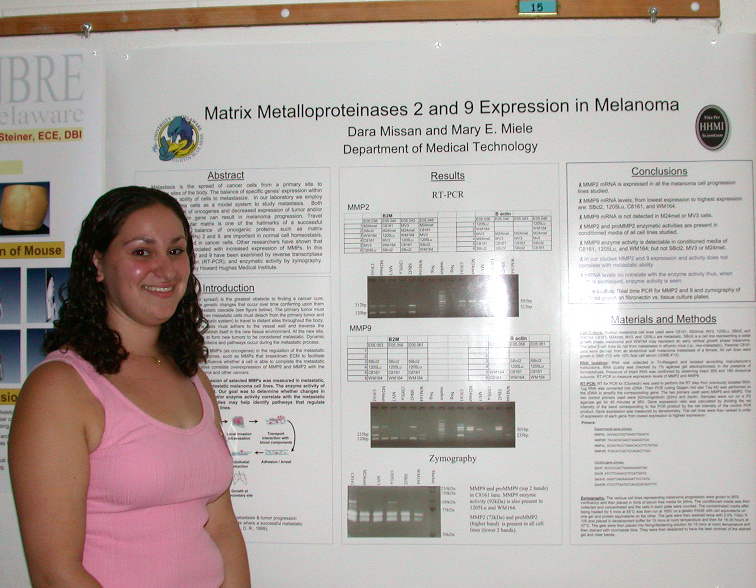Ordered alphabetically
by student's last name

Matrix Metalloproteinases 2 and 9 Expression in Melanoma Dara Missan and Mary E. Miele Department of Medical Technology Metastasis is the spread of cancer cells from a primary site to discontinuous sites of the body. The balance of specific genes’ expression within cells impacts the ability of cells to metastasize. In our laboratory we employ malignant melanoma cells as a model system to study metastasis. Both increased expression of oncogenes and decreased expression of tumor and/or metastasis suppressor gene can result in melanoma progression. Travel through the extracellular matrix is one of the hallmarks of a successful metastatic cell. The balance of oncogenic proteins such as matrix metalloproteinases (MMPs) 2 and 9, are important in normal cell homeostasis, but may be dysregulated in cancer cells. Other researchers have shown that metastatic ability is associated with increased expression of MMPs. In this project, levels of MMPs 2 and 9 have been examined by reverse transcriptase polymerase chain reaction (RT-PCR); and enzymatic activity by zymography. Supported by HHMI. |